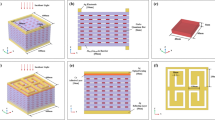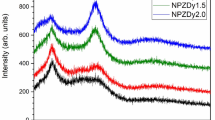Abstract.
We report the results of our studies on the nonlinear optical response of thin films of tetraphenyl porphyrin doped in boric acid glass for picosecond-duration pulses. The fluence-dependent transmission measurements show that the sample exhibits reverse saturation behavior at 532 nm and saturable absorber action at 683 nm. By fitting the nonlinear transmission data at these wavelengths to a rate equation model, values for σS e and σL the excited singlet and ground state cross sections were obtained. The large value (≈8) for σS e/σL makes it a potential material for optical limiting at 532 nm, whereas at 683 nm the ratio σL/σS e≈4.3. Intensity dependence of degenerate forward four-wave mixing at 683 nm was also investigated to establish the order and magnitude of the nonlinearity. The forward four-wave mixing signal at 683 nm showed a cubic dependence on the input intensity, establishing the third-order nonlinearity. A value of 4×10-12 esu for the third-order susceptibility |χ(3)| was estimated from the measured efficiency. The time response of the nonlinearity was measured by the pump-probe transmission experiment, resulting in a decay constant of about 1.8 ns for the repopulation of the ground singlet state at 683 nm.
Similar content being viewed by others
Author information
Authors and Affiliations
Additional information
Received: 13 April 2000 / Published online: 20 September 2000
Rights and permissions
About this article
Cite this article
Divakara Rao, K., Anantha Ramakrishna, S. & Gupta, P. Nonlinear optical studies in tetraphenyl-porphyrin-doped boric acid glass using picosecond pulses . Appl Phys B 72, 215–219 (2001). https://doi.org/10.1007/s003400000393
Issue Date:
DOI: https://doi.org/10.1007/s003400000393




